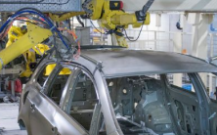Recent Labour Market data released by the Office for National Statistics paints a familiar trend. 32.39 million people in work – 42,000 more than January to March 2018 and 313,000 more than the previous year. Unemployment is at 4% – the lowest it has been since 1974 and the number of EU nationals working in the UK has continued to decline. And MAC’s (the Migratory Advisory Committee) recommendation that there is no “explicit work migration route for low-skilled workers” could further compound the heightening candidate shortage.
With near full employment and a continued demand for workers, it is very much a candidate driven market and such a market requires staffing agencies and organisations to work closely together to not only focus on attracting candidates, but possibly and more importantly, to ensure the retention of those flexible and permanent employees already employed. As a major provider of temporary and permanent labour, we have outlined some of the initiatives and solutions we are discussing and implementing with customers:
Early indicators and planning
As straightforward as it may seem, nothing beats good old fashioned planning. Identifying potential staffing requirements early on and communicating them to your staffing provider will help make sure ample time can be put into attracting and recruiting candidates.
Sadly, in today’s tightening labour market, candidates are not sat there waiting for the call. That said, with more notice most agencies can look at candidate deployment as well as developing candidate attraction campaigns that provide the best possible results.
Consider the information you have that may suggest an increase in the need for more candidates, for example, have your customers discussed new product lines that require you to increase your workforce in the near future.
If, however, you constantly find yourself scrabbling for workers at short notice, speak with your agency. This after all, is their area of expertise and many would be only too happy to assist with worforce planning.
A slick and easy application process – the difference between applying for your job or another one
Make it easy for candidates to apply. Review your recruitment process through the eyes of a candidate. Is it straightforward, and importantly, are there any areas that could be streamlined to reduce the attrition rate of potential candidates by speeding up the time it takes a candidate to go through the process?
Most candidates will have a number of job offers, so time is not something organisations have the luxury of in a candidate driven market. Look at the information you ask for, decide what is essential versus what is a nice to have – with new GDPR legislation in place this is an added benefit.
Explore other ways to make applying easier too. For example, could you increase your candidate pool by offering interviews out of normal working hours?
Make the workplace attractive to improve candidate retention
In a candidate driven market holding on to those workers you already have is far more straightforward than trying to recruit for more. There are a number of elements to this, some straightforward whilst others may require potential changes.
Value your employees – both permanent and flexible
Many organisations already treat permanent and flexible employees equally, offering parity of pay and benefits to both. The Taylor review actually goes one step further, suggesting that flexible workers should receive better packages than permanent employees given the lack of job security. Regardless, it is important that flexible employees feel valued.
Most flexible workers understand the nature of being ‘flexible’ and will always go out of their way, picking up extra shifts, working overtime as demand changes. However, organisations need to consider the impact of regularly changing or cancelling shifts at short notice. Ultimately this will erode good will and increase the chances of flexible employees looking elsewhere.
Working conditions
Everyone wants to work in a nice environment and it’s amazing the difference simple changes can make to not just retention but also productivity. Working with one client to undertake a site analysis the Gi Group Account Team made simple recommendations which resulted in better working conditions and morale:
Looking at the space flexible workers have to work in, maximising space in busy production areas to provide people with more space to work.
- Changing shift patterns to accommodate more workers reliant of public transport
- Increasing visibility of shift co-ordinators to engage with workers and resolve any questions they may have
- Remove any barriers to working – are there enough clocking in machines, enough PPE (if relevant) and lockers for flexible workers
The results were immediate with staff turnover falling from 20% to 6%.
Develop the skills you require
With candidates in short supply, looking at how you can develop the skills of those already working for you to fill higher or more skilled roles is one way we are working with organisations to overcome the current candidate shortage. Not only does this build your pool of skilled workers, it also supports candidate attraction by demonstrating that flexible employees are offered progression opportunities.
Apprenticeships too should be considered. Establishing an apprenticeship programme provides access to a currently under-represented segment of the workforce. And whilst it may require some up-front investment to implement, the benefits far out-way the initial outlay.
Settlement Status for EU workers
With the process for applying for settlement status now open consider what you can do to help inform and support those employees who may be considering applying. At Gi Group we are working with our EU workforce to communicate the process, signposting them to resources, information and further support to complete the application process for those wishing to apply.
A tougher candidate market, with limited official solutions from the powers that be, , requires organisations and staffing providers to work even closer together, looking beyond candidate attraction to overall candidate management and retention initiatives to fulfil workforce requirements. For further information on how Gi Group can assist you with candidate planning and retention contact us at infoUK@gigroup.cpm












